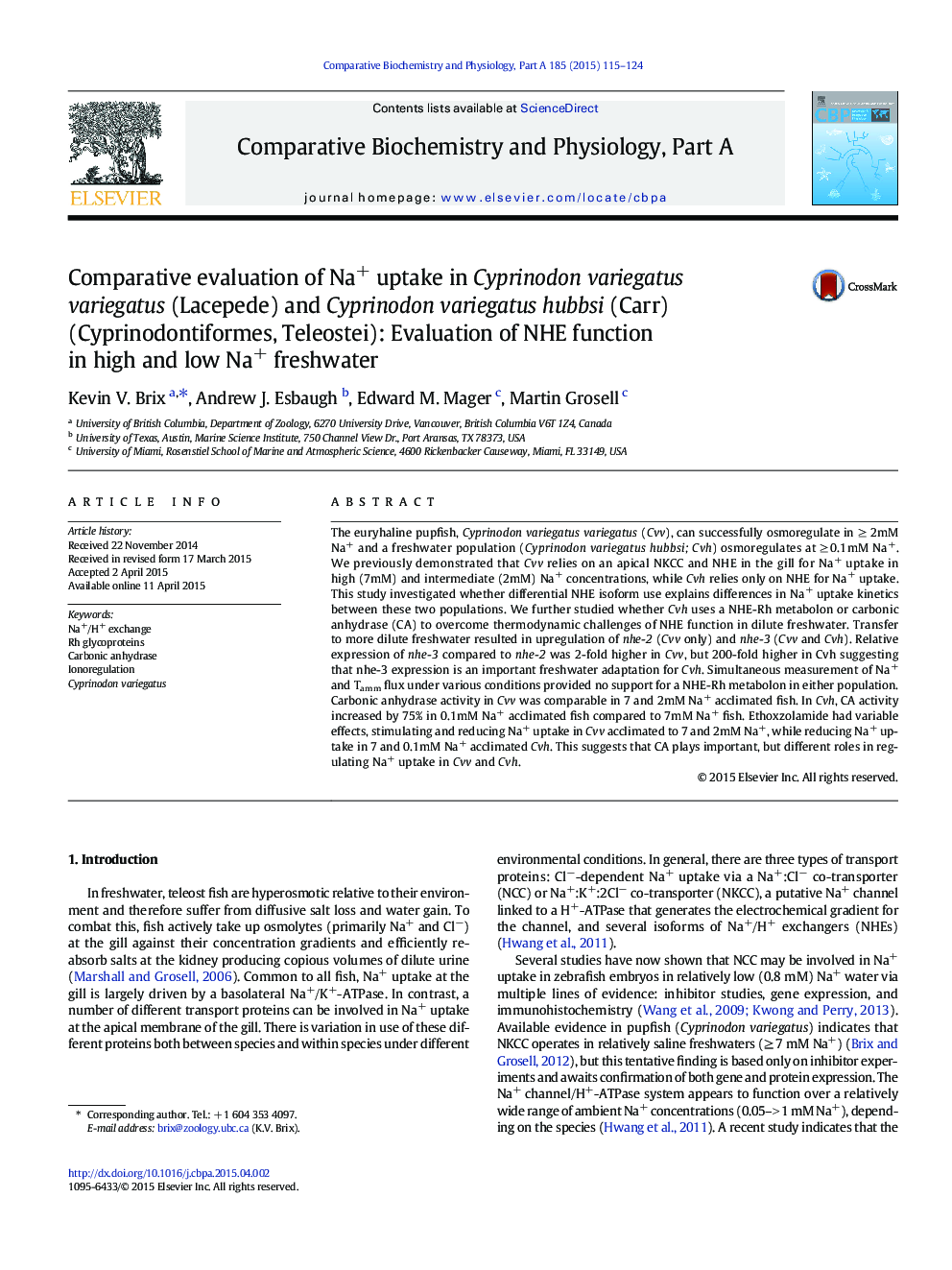| Article ID | Journal | Published Year | Pages | File Type |
|---|---|---|---|---|
| 8318579 | Comparative Biochemistry and Physiology Part A: Molecular & Integrative Physiology | 2015 | 10 Pages |
Abstract
The euryhaline pupfish, Cyprinodon variegatus variegatus (Cvv), can successfully osmoregulate in â¥Â 2mM Na+ and a freshwater population (Cyprinodon variegatus hubbsi; Cvh) osmoregulates at â¥Â 0.1mM Na+. We previously demonstrated that Cvv relies on an apical NKCC and NHE in the gill for Na+ uptake in high (7mM) and intermediate (2mM) Na+ concentrations, while Cvh relies only on NHE for Na+ uptake. This study investigated whether differential NHE isoform use explains differences in Na+ uptake kinetics between these two populations. We further studied whether Cvh uses a NHE-Rh metabolon or carbonic anhydrase (CA) to overcome thermodynamic challenges of NHE function in dilute freshwater. Transfer to more dilute freshwater resulted in upregulation of nhe-2 (Cvv only) and nhe-3 (Cvv and Cvh). Relative expression of nhe-3 compared to nhe-2 was 2-fold higher in Cvv, but 200-fold higher in Cvh suggesting that nhe-3 expression is an important freshwater adaptation for Cvh. Simultaneous measurement of Na+ and Tamm flux under various conditions provided no support for a NHE-Rh metabolon in either population. Carbonic anhydrase activity in Cvv was comparable in 7 and 2mM Na+ acclimated fish. In Cvh, CA activity increased by 75% in 0.1mM Na+ acclimated fish compared to 7mM Na+ fish. Ethoxzolamide had variable effects, stimulating and reducing Na+ uptake in Cvv acclimated to 7 and 2mM Na+, while reducing Na+ uptake in 7 and 0.1mM Na+ acclimated Cvh. This suggests that CA plays important, but different roles in regulating Na+ uptake in Cvv and Cvh.
Related Topics
Life Sciences
Biochemistry, Genetics and Molecular Biology
Biochemistry
Authors
Kevin V. Brix, Andrew J. Esbaugh, Edward M. Mager, Martin Grosell,
